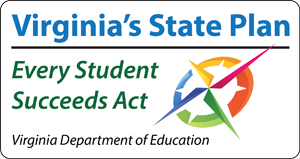 by James C. Sherlock
by James C. Sherlock
Yesterday I wrote a column about the broad and deep failures of the Richmond Public School (RPS) system in educating the children in its care.
Today I will present RPS’ organizational structure, budget and headquarters staffing for managing the complexity of the system. I suspect RPS’ level of complexity is similar to other urban school systems in Virginia.
It will show that whatever is done to improve the schools faces management challenges in addition to the student achievement and school climate problems discussed yesterday.
RPS Schools and programs
Traditional instruction and student bodies
- five pre-school centers,
- 25 elementary schools
- seven middle schools
- 5 comprehensive high schools
Other schools and field programs
- 3 special education schools;
- one technical school;
- two charter schools;
- two alternative programs within traditional schools.
- four “Community Hubs” around the city to connect with families and community partners
- “Family academy” training and workshops. Virtual sessions on a variety of topics related to mental, academic, fiscal, and physical fitness.
- Center for Families in Transition (C-FIT) – deals with housing instability and homelessness, foster care and students living with kinship caregivers
- RPS at home – Google tech toolkit for families and guardians.
There are of course a large number of additional programs in the headquarters academics, community engagement, operations, and schools offices.
Management
RPS headquarters has a very large staff reporting to the Superintendent. That staff includes 703 employees and 31 contractors.
Among those are 44 RN’s, six LPNs, 8 nurse assistants and 42 school social workers most of whom presumably work in schools. So let’s call it 600 employees who will show up to work at RPS headquarters when COVID restrictions are lifted.
The FY 21 budget shows the cost of administrative personnel will jump 26.9% year-over-year. What is covered by that number I have not yet examined, but likely include new programs such as increased remedial math and reading to manage.
There is perhaps no apples-to-apples way to judge the appropriateness of that size of a staff because of the unusual complexity of the system.
Funding
The student population is about the same as Arlington County Public Schools (ACPS).
Though ACPS has a considerably larger FY 21 budget ($670 million to $495 million), each reports spending about the same on average per pupil expenditures for operations ($16,598 Richmond, $16,118 Arlington).
I have seen no indication yet on how RPS will spend its share of the windfall COVID relief money.
Enrollment growth
RPS had 3,028 more students enrolled in 2020-21 than in 2019–20, a 12% increase.
Next
Tomorrow the promised column about one of the people working inside RPS headquarters who is trying to improve math and reading achievement.


